Data collection is more important than ever for restaurant operators, and with so many sources out there — from POS systems to delivery platforms, and from loyalty programs to digital surveys — the potential data mine is infinite. But information collection is not just a numbers game; quality and utility are just as important.
According to the December 2023 Market Leader Report from Nation’s Restaurant News Intelligence, only 21% of operators would rate their data quality as good, while only one-quarter of restaurant operators are confident in their data optimization abilities, revealing the need for more data education.
“If you don’t value working with data, you’re going to go out of business in a few years,” said Gary Chaglasyan, cofounder and CEO of RestoGPT AI. “Once restaurants start understanding that their data is worth a lot — that it’s a picture of their business and their [customer] goodwill — then they’re going to value data as currency.”
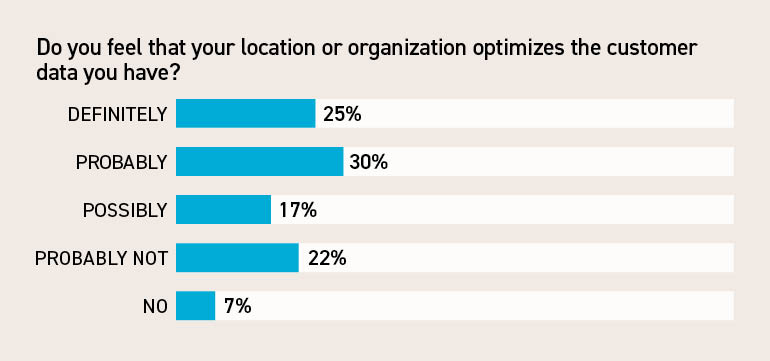
But just knowing how important data is to the operations of a modern restaurant isn’t enough. Restaurant operators need to build the nuts and bolts of data optimization by asking themselves (and their teams) the right questions.
Are you collecting the right data?
While the NRN Intelligence Market Leader Report found that only 25% of survey respondents “definitely” felt they optimized data well (dubbing them “the data optimizers”), before operators gain that confidence they have to know if they’re even collecting the right data.
“The quantity of data at the fingertips of many operators has outpaced its actual use cases,” said Joe Yetter, general manager, Punchh at PAR Technology. “A lot of the available data out there is junk and there’s no need to store it, but there’s some really rich, valuable data too, and it’s sometimes hard to differentiate between those two.”
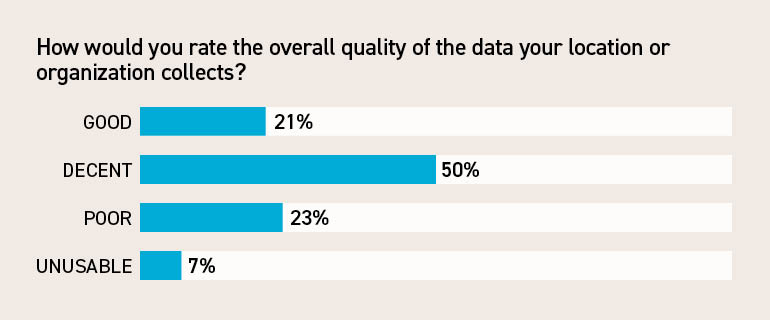
Yetter added that while knowing the basic health of the business (sales trends, revenue and real-time performance) is table stakes for all restaurant operators, a restaurant’s data “heartbeat” is unique depending on the size and specific needs of the business. The most crucial aspect of selecting and storing the right data is to make sure the data is working for your business, and not the other way around, Yetter said.
For example, at The Melting Pot, while the Tampa, Fla.-based fondue chain does not really utilize a customer relationship management (CRM) tool, the company’s technology team has found that RFM (recency, frequency, and monetary spend) of its customer base is the most useful data to keep track of, alongside guest survey data.
“Customer segmentation has come a long way,” Melting Pot vice president of technology Randy Barnett said. “Nowadays, you can go to these data mining companies and start pitting your data against what they have to really home in on who your customer is … and figure out how to take that bottom 20% of your customer base and get them into the top 50%.”
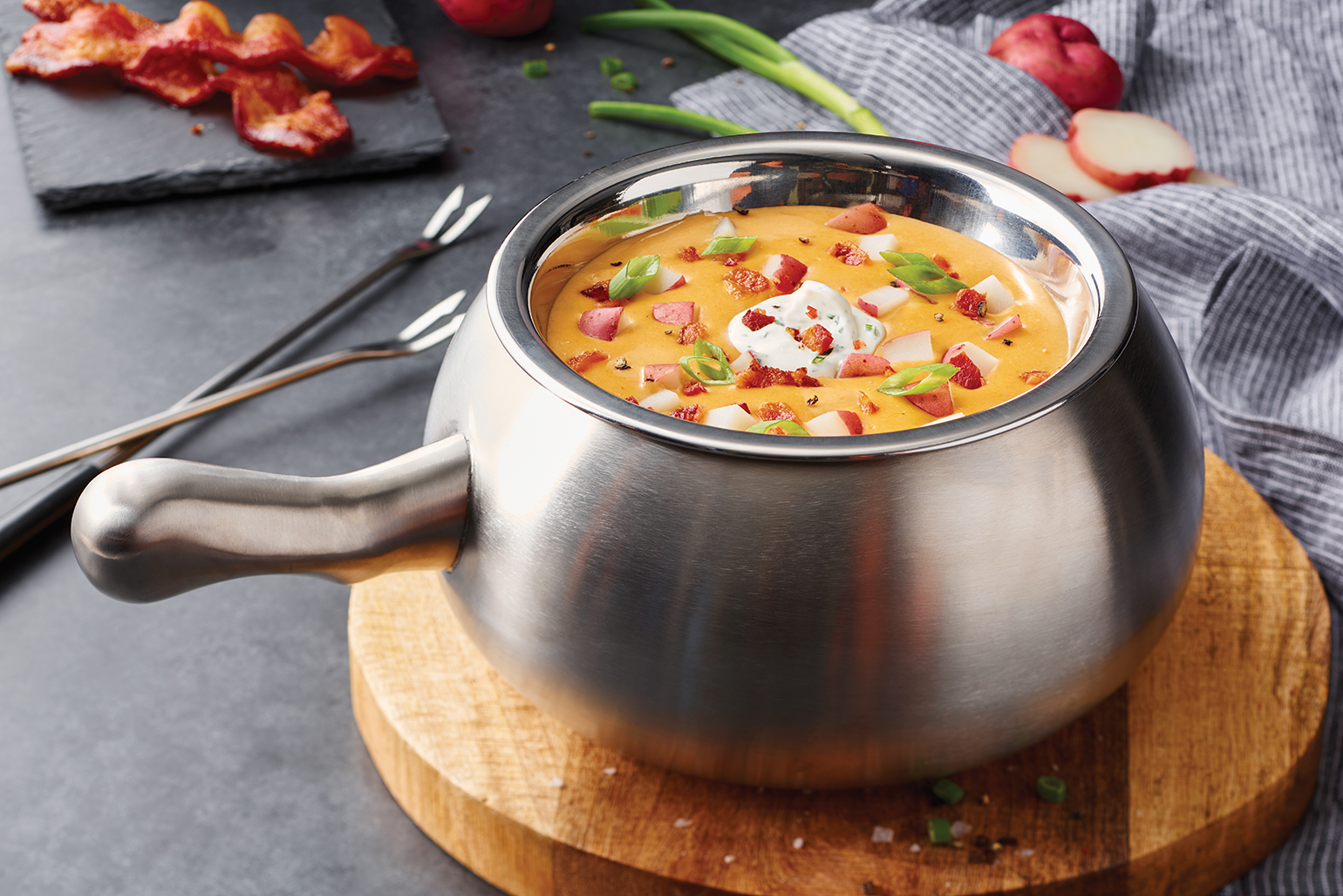
While the Melting Pot does not use a CRM tool, the company closely watches customer sentiment via guest surveys.
How do you store and extract your data?
Leon Davoyan, the CTO of Dave’s Hot Chicken, said that while “in the old days” basic information extracted from the POS might be enough to get by for data analysis, now you want to balance that information with loyalty program data and credit card data to capture non-loyalty guests. The Pasadena, Calif.-based chicken brand recently onboarded a customer database provider (CDP) to extract data from credit card transactions.
“Back in the day, all you had was loyalty data and you’d use that to make assumptions for the rest of your customer base. But loyalty guests exhibit different behaviors than non-loyalty guests,” Davoyan said. “Credit card tokens are just a string of letters and numbers that represent a credit card, and you don’t know who that person is. So being able to take that information, summarize it, and learn more about our guests has been invaluable.”
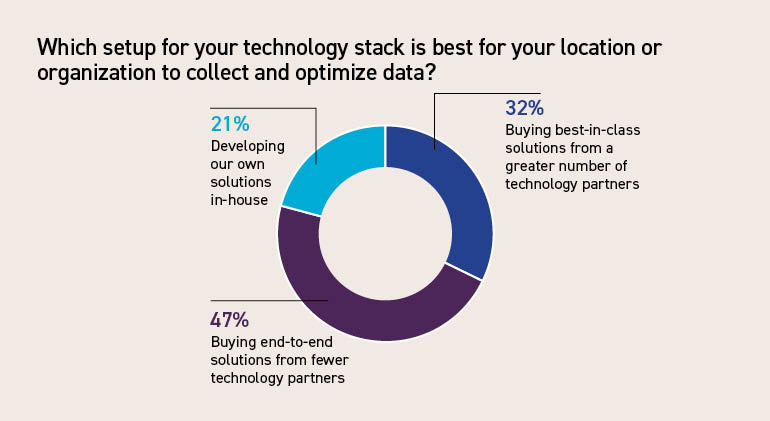
Additionally, the more tech vendors you have, the harder it is to organize the information, and the more challenging it is to extract data that can all “speak the same language.” For this issue, Davoyan said it has been crucial to work with at least one vendor that has an open API — meaning an application with a publicly available programming interface.
“If one of the vendors has a public API that the other vendor can connect to, then you basically copy the data and you get what you need in the same format,” Davoyan said. “Then from there, you can take the data and manipulate it in any way you want.”
When it comes to data storage, many operators choose to store it offsite in a data warehouse for both the sake of security and ease of use. That’s the case at The Melting Pot, which uses ETL processes (extract, transform and load) to move the company’s data from onsite software to an offsite warehouse.
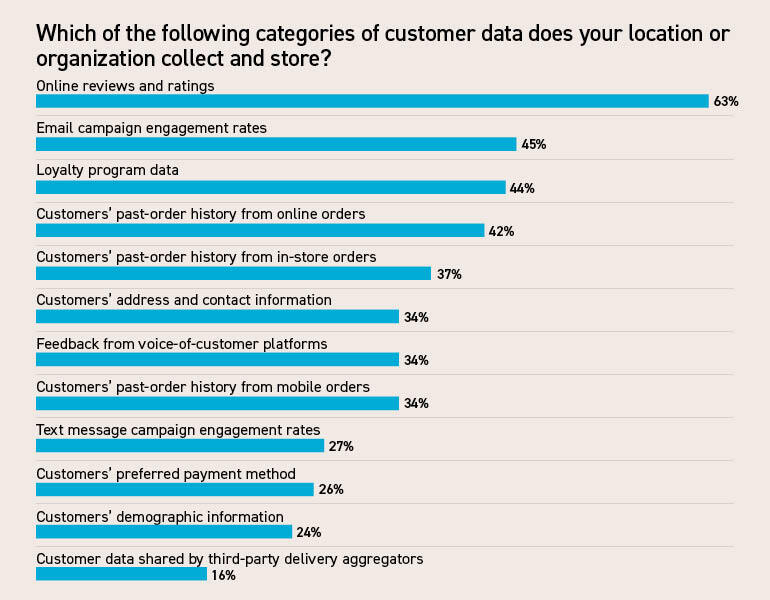
“We're cognizant that people may want to see the data in different ways and may want to consume it differently,” Barnett said. “Our job is to anticipate those needs and make sure that the experience [of reading the needed data] is seamless.”
How do you make sure your data is secure?
One of the most basic building blocks of data security is storing your information in secure databases with encryption.
“Encryption is basically just making the data look like gobbledygook so that if someone were to steal it, they wouldn’t be able to decipher it,” said Carlos Morales, senior vice president of solutions for cloud-based security software Vercara. “Encrypting data while it’s in transit and in storage is important … and the fewer people who have access to that data, the smaller the potential of fraud and data loss.”
Restaurant operators also may be more liable in the case of data leaks or identity theft than they realize, Morales said, adding that there are a lot of regulations around any businesses that store credit cards. One of the top causes of credit card theft is weak or reused usernames and passwords, which can be stolen and then used to compromise other networks.
“A hundred years ago, if you wanted to rob somebody, you physically had to go there, but nowadays, you can get on the WiFi network at Starbucks and steal data over lunch,” Morales said.
The best way to protect your business, Morales said, is to invest in tools like a protective DNS (domain name system), which adds a layer of security between the user accessing your app or website and the Internet. Another important solution is to invest in cybersecurity awareness training for employees, so that they know how to pick a strong password and not fall for phishing attempts.
Another crucial layer of protection is to leave cybersecurity to the experts. At Dave’s Hot Chicken, the company not only outsourced the collection and storage of their data, but also hired an outside expert to analyze the strength of their security and report any red flags.
“Technology moves so fast, and if you’re a target, it’s so easy for a hacker to find a security hole and take someone to the cleaners,” Davoyan said. “Once you find one area of vulnerability, another one might pop up … so you just put your best foot forward and hope for the best, which is not a very good strategy.”
Is it important for restaurants to own their own data?
In the years since third-party delivery apps were first criticized for cutting restaurants off from customer data on their platforms, it has become more important than ever to own — or at least have full access to — customer data, so they can both manage and extract from a raw dataset.
“I think owning your data is the key to really understanding that experience all the way, and controlling the dining experience from discovery all the way through that exit phase is a daunting experience,” said Kelly MacPherson, chief technology officer and supply chain officer at Union Square Hospitality Group, during a recent technology panel with Platform by JBF from the James Beard Foundation. “Without owning your customer data, it's very difficult to intersect between each one of those phases of the customer experience.”
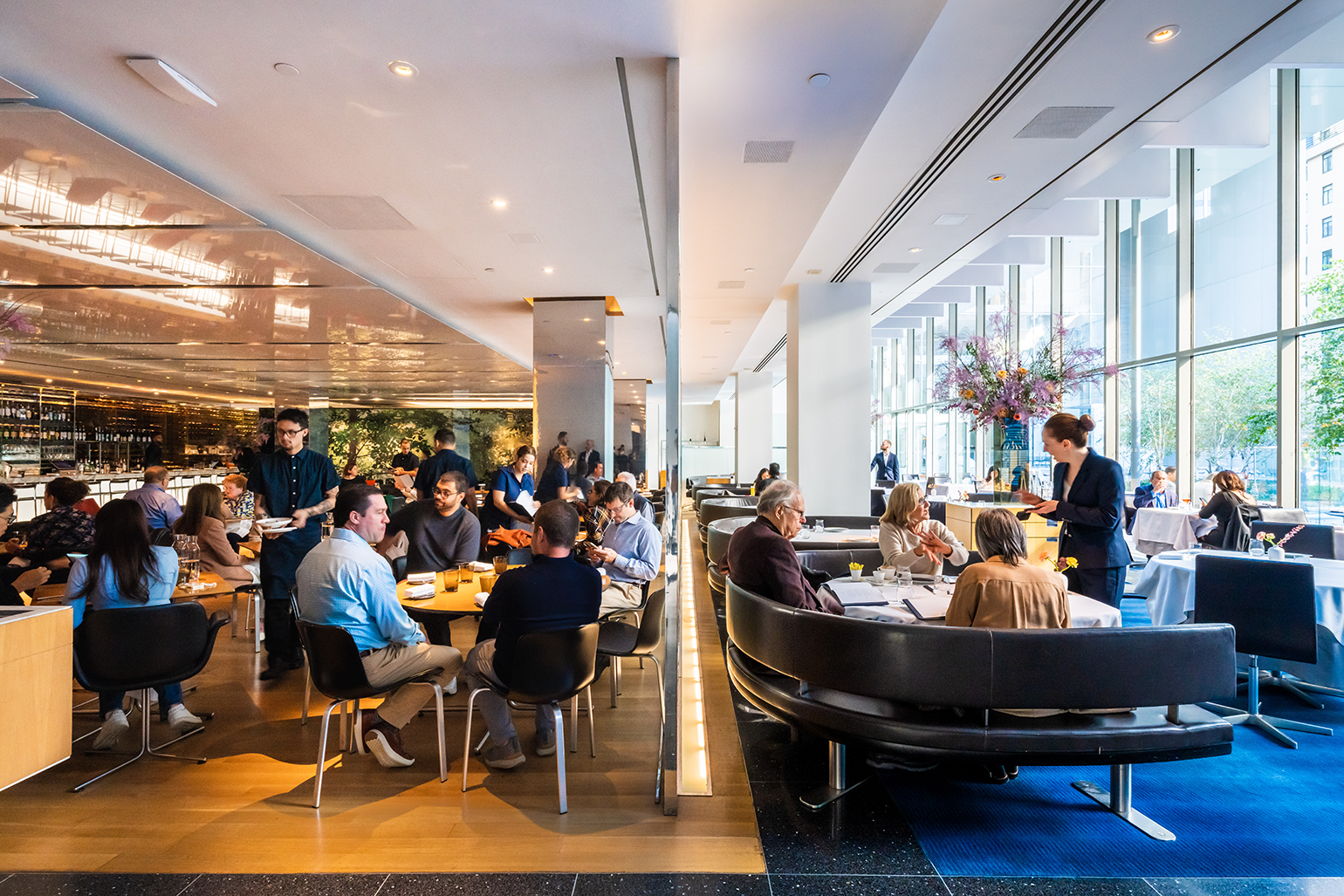
The Modern is one of the Union Square Hospitality Group properties in New York City, where owning customer data is crucial.
How do you best apply that data?
One of the most effective approaches to data analysis is to use data to predict what is likely to happen in your restaurant, rather than just use it to analyze what might have happened during last night’s dinner shift.
“Way too many data points are lagging indicators rather than leading indicators,” said Jeremy Julian, chief revenue officer of Custom Business Solutions, said. “Most operators have been trained to look at what happened, and with AI and predictive analytics, you can know what’s likely to happen next week. … Unfortunately, way too many operators still live by the law of, ‘on Tuesday, we prep this amount of sandwiches.’”
Essentially, Julian said, you should be using data to not only predict what your restaurant will need tomorrow, but also to solve the specific problems your operation is facing.
“Do you have a guest satisfaction problem? Do you have a reporting problem? Are you trying to tackle something on the labor side?” Julian said. “Once you figure out the issue you’re trying to solve, chances are there's enough data there to get you started.”
Two of the most important tools at a restaurant’s disposal are customer data platforms and customer relationship management tools. Using both can help operators figure out who their customer base is, what they like to order, and how they spend money, as well as take action to make that customer experience more personalized.
“It’s great when you’re a regular at a diner and the owner recognizes you and asks about your family, but what about when you have five stores and can’t be everywhere?” Julian said. “You have to do the same thing in a digital way.”
Julian said that he once worked with California Fish Grill, which was using a CDP to identify and learn about customers. One location figured out that there was a sales representative who would order $1,000 worth of catering orders every week for the doctors at his place of work, and he would also come in with his family for dinner occasionally. Once they figured out his pattern using the CDP, they were able to surprise this guest with a VIP deal to come in for a free meal.
BRIX Holdings, parent company of Friendly’s, is going to be implementing a CDP soon so that the technology and operations teams can learn more about their restaurants.
“I think a CDP will help us move our brands forward, especially [a brand like] Friendly’s which didn’t get a tech upgrade for a long time,” said Carissa DeSantis, chief technology officer of BRIX Holdings. “We’ve been looking into doing the fast-casual model where we have traditionally done table service. … With data, we would know what markets we could go into where that model would work. … I firmly believe there’s no such thing as too much data. There’s so much we can do with data to get to know our guests better and better inform our brands’ direction.”
Contact Joanna Fantozzi at [email protected]

